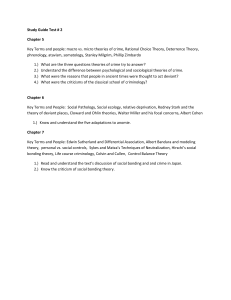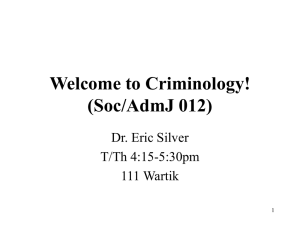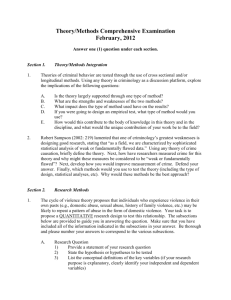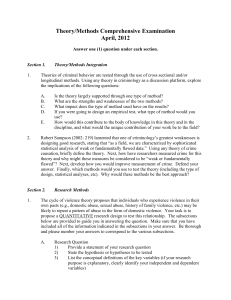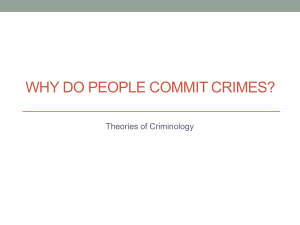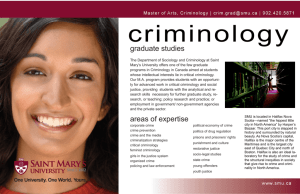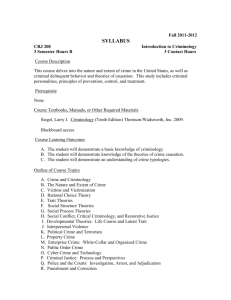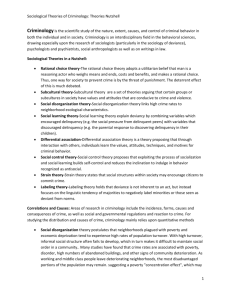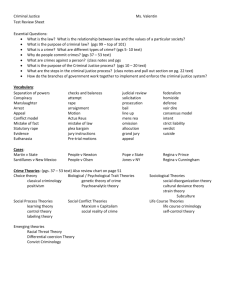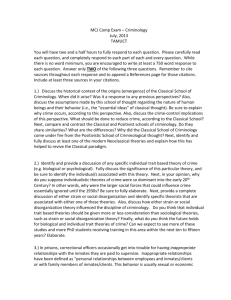Past Theory-Methods Comprehensive Exam Questions February 2013
advertisement
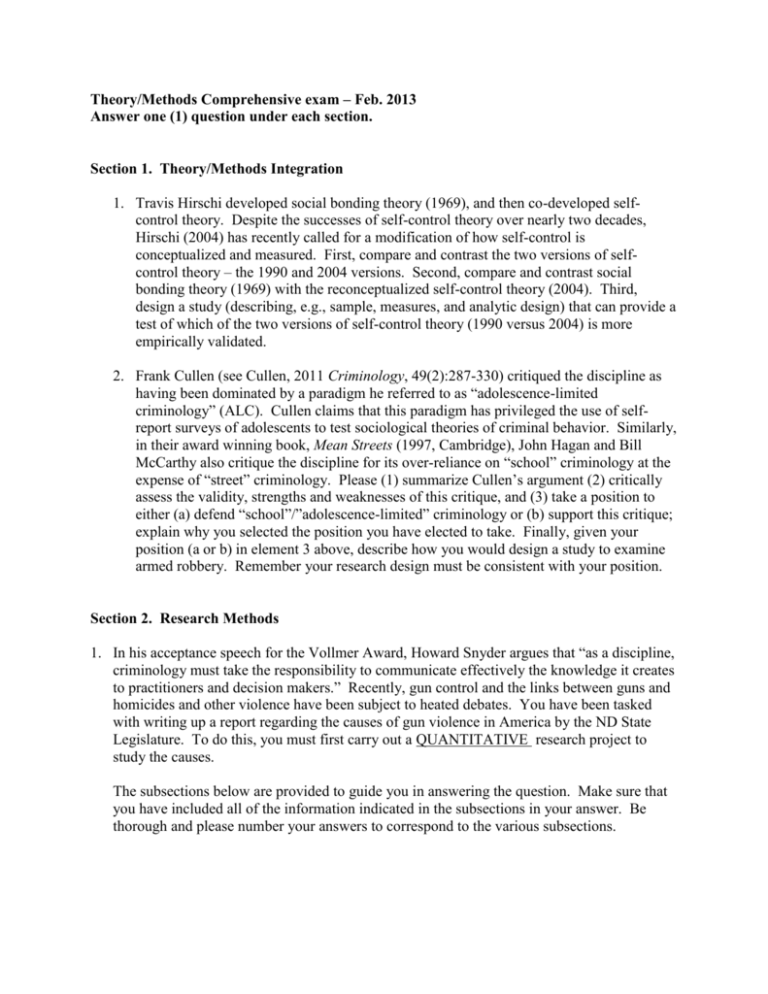
Theory/Methods Comprehensive exam – Feb. 2013 Answer one (1) question under each section. Section 1. Theory/Methods Integration 1. Travis Hirschi developed social bonding theory (1969), and then co-developed selfcontrol theory. Despite the successes of self-control theory over nearly two decades, Hirschi (2004) has recently called for a modification of how self-control is conceptualized and measured. First, compare and contrast the two versions of selfcontrol theory – the 1990 and 2004 versions. Second, compare and contrast social bonding theory (1969) with the reconceptualized self-control theory (2004). Third, design a study (describing, e.g., sample, measures, and analytic design) that can provide a test of which of the two versions of self-control theory (1990 versus 2004) is more empirically validated. 2. Frank Cullen (see Cullen, 2011 Criminology, 49(2):287-330) critiqued the discipline as having been dominated by a paradigm he referred to as “adolescence-limited criminology” (ALC). Cullen claims that this paradigm has privileged the use of selfreport surveys of adolescents to test sociological theories of criminal behavior. Similarly, in their award winning book, Mean Streets (1997, Cambridge), John Hagan and Bill McCarthy also critique the discipline for its over-reliance on “school” criminology at the expense of “street” criminology. Please (1) summarize Cullen’s argument (2) critically assess the validity, strengths and weaknesses of this critique, and (3) take a position to either (a) defend “school”/”adolescence-limited” criminology or (b) support this critique; explain why you selected the position you have elected to take. Finally, given your position (a or b) in element 3 above, describe how you would design a study to examine armed robbery. Remember your research design must be consistent with your position. Section 2. Research Methods 1. In his acceptance speech for the Vollmer Award, Howard Snyder argues that “as a discipline, criminology must take the responsibility to communicate effectively the knowledge it creates to practitioners and decision makers.” Recently, gun control and the links between guns and homicides and other violence have been subject to heated debates. You have been tasked with writing up a report regarding the causes of gun violence in America by the ND State Legislature. To do this, you must first carry out a QUANTITATIVE research project to study the causes. The subsections below are provided to guide you in answering the question. Make sure that you have included all of the information indicated in the subsections in your answer. Be thorough and please number your answers to correspond to the various subsections. A. B. C. D. E. F. Research Question 1) Provide a statement of your research question 2) State the hypothesis or hypotheses to be tested 3) List the conceptual definitions of the key variables (if your research purpose is explanatory, clearly identify your independent and dependent variables) Sampling Design 1) Identify the population, sample, sampling frame, and sampling technique Data Collection Technique(s) 1) Describe the instrument to be used 2) Provide operational definitions of the key variables, as well as identify the level of measurement for each (be sure to provide a justification for using particular levels of measurement) Human Subject Protections 1) Identify any issues related to the use of human subjects/respondents Measurement Quality 1) Describe the reliability and validity of the measures Analysis Plan 1) Explain the appropriate statistical tests to be used and why? 2. Criminologists are often faced with various methods for comparing the effects of treatment(s) on various outcomes. Treatments might take on the guise of a program, a law, or a specific form of intervention. Discuss experimental and quasi-experimental strategies that can be employed to assess the effect of a treatment on an outcome. Be sure to discuss in detail, the formation and selection of groups for comparison. With each strategy you identify, list and discuss its strengths and weaknesses. Section 3. Individual Crime Theories 1. Exposure to delinquent/criminal peers has long been one of the most robust predictors of offending, at the individual level. Several individual theories of crime either explicitly or implicitly address the role of exposure to peers in their explanations of crime. Using social learning theories and control theories, explain the foundation of each theory in detail with a particular emphasis on how the role of peers operates within the context of each theory. Next, discuss recent developments in the literature that have addressed the peer effect through the lens of each theory an speculate on how the role of peers might change in future tests/explanations of crime. 2. The notion that individuals are capable of selecting environments that are compatible with their genetic disposition or personality traits has received recent attention. Discuss two theories in criminology that are capable of explaining “niche picking behavior.” Discuss how these theories see the triangulation of genetics, personality, and the environment toward contributing to an explanation of criminality. Section 4. Structural Crime Theories 1. Some criminologists argue that differences in neighborhood crime rates simply represent the tendency for individuals with certain social, psychological, and demographic characteristics to live in different parts of the city. From this perspective, it is not necessary to consider the role of neighborhood structures and dynamics at all, for they are simply aggregated proxies for processes that actually unfold at the individual level. That is, for example, observed relationships between the level of community deprivation and the crime rate actually represent the relationships between the economic status of individuals and the level of their criminal involvement. Do you agree or disagree with this proposition, and what theoretical and empirical evidence can you provide to support your position? 2. Using the work of John Hagan on power-control theory, critical theorists like Colvin & Pauly, Bonger, and Greenberg, and various feminist theorists, discuss this thesis: “Crime cannot be adequately explained unless the nature of power in society is taken into account.”
